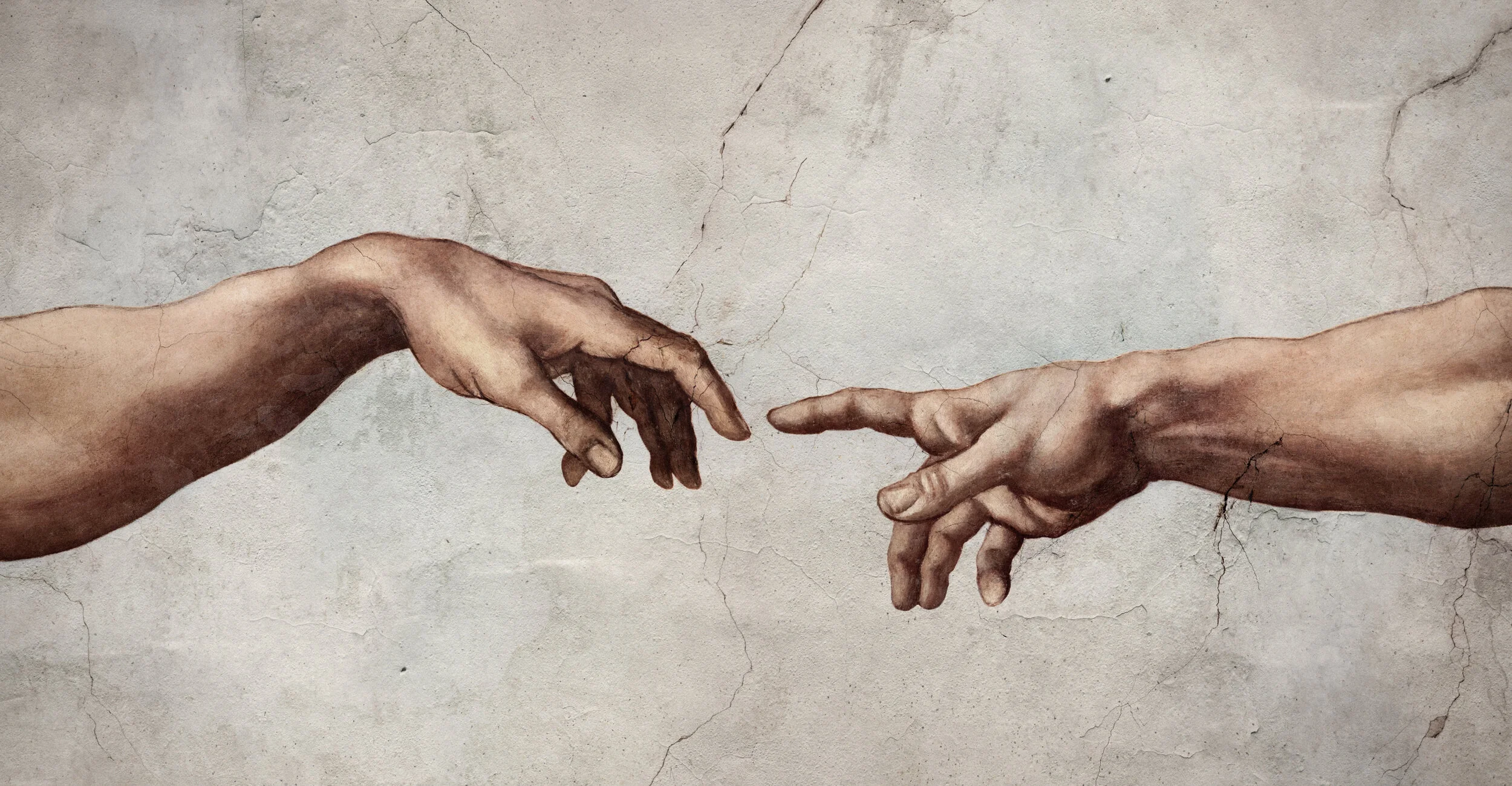The Five Senses: Touch
To truly experience an object invariably means to touch it, finds Stéphane Geffray.
Lending a helping hang - a touching gesture (image © Shutterstock)
We see through our eyes, hear through our ears, taste using our mouth, and smell through our nose; but there is no specific organ dedicated to touch. Even in utero, we bathe in the warmth of the amniotic fluid, and right after we are born, one of our first interactions with the world is of touching and being touched by loving hands, cosy fabrics and soft bosoms.
What is all this to do with design? Actually, everything. One might even consider that touch is the most fundamental sense for a designer to address. Since our entire body is able to touch, our brain is constantly assessing the signals it thus receives. We can close our eyes, put on ear plugs, hold our breath and rinse our mouth. But we cannot disconnect ourselves from our body. Furthermore, as any Viennese doctor could tell, touch is the main sense through which we experience pleasure - and it remains so throughout our lives (that most religions closely associate touch with sin only confirms the fact). Ergo, touch is the most immediate and permanent way through which we experience satisfaction - or don’t -, which is one of the main standards by which a good design can be judged.
Designed to light a fire (photo © Shutterstock)
The first 1932-1933 Zippo lighter had sharp angles, which were hard to the fingers and damaging to pocket linings. Once its edges became slightly rounded, that was that: the Zippo shape would never again need to change. Holding these lighters is a source of pleasure, augmented by the knowledge of using a perfectly functional object. If properly designed, all tactile surfaces can, even must, provide pleasure. Hence almost naturally, they will be practical and efficient, if they provide pleasure.
By promoting the idea of 'touch design’, former Renault Vice President of Design, Patrick le Quément epitomised this idea and managed to extend it to include affordable, non-luxury cars. The principle of “touch design” is to create interiors where everything is correctly and instinctively placed, as well as enjoyable to touch. Interiors where nothing requires attention, but everything provides the user with tiny moments of satisfaction. It also encompasses, in le Quément’s own words, creating «a welcoming environment for the whole body, like a protecting cocoon». That in utero thing, again…
Tangible luxury (photo © Design Field Trip)
Much has been said about the tactile delights of the organ-like pull-stops that control the airflow in Rolls-Royces and Bentleys; one could also quote the jewel-like air vents of the Pagoda Mercedes SL, or the cleverly-shaped switches of the first Bristols. But more mundane cars, be they le Quément-influenced Renaults or models from other marques, can also deliver a touch of genius (or maybe a genius for touch). Like the well-oiled, mechanical feeling of the gear lever of my 8-year old Kia Picanto. Similarly, a Laguiole knife will is simply more satisfactory to hold than a plastic knife. Inserting a CD into a good CD player is also more enjoyable than swiping the greasy screen of a smartphone.
Therein lies the rub: car dashboards are now no more than an accumulation of screens, mainly supposed to provide ’in-car infotainment’. But do we really need to be informed, entertained, or, more generally, distracted when driving? Could automakers not make a first start by providing in-car satisfaction that would address our senses, with touch being first and foremost? I would fear to be considered a curmudgeon, if Christopher Butt had not recently published a great article, where he expresses his criticism of ‘haptic feedback’. Haptic feedback, like synthetic engine noises, is a fraud. Even more offensive to the senses are voice and gesture recognition systems: unless they are significantly cheaper (and if so, could that be translated in the retail price, please?), what is the point of transforming drivers and passengers into yelling and shaking puppets, when a stalk, a button, a switch, a lever would perfectly do?
Safe to the touch (photo © Malte Dibbern for Design Field Trip)
As teenagers, many of us have played ‘air guitar’. As some of us were to find out later, playing a real guitar provides sensations on an absolutely different level: the warmth of its neck, the vibrations from its body, the tensions of its strings… Whenever my body gets the feeling that what it touches precisely fulfils a function, I take pleasure in it. Therefore the travel and weight of each pedal, of the steering, of the gear lever, the firmness of the seat cushions et al not only can, but absolutely must be designed. Be it in a sports car, an SUV, an autonomous car: whatever automobiles may be like in 5 or 10 years’ time, they will still carry people. People with bodies. People who will always feel infinitely more through touch than through waving or speaking.
By the way: Even those of us who stuck to ‘air guitar’ never really considered the possibility of ‘air sex’. Right?






